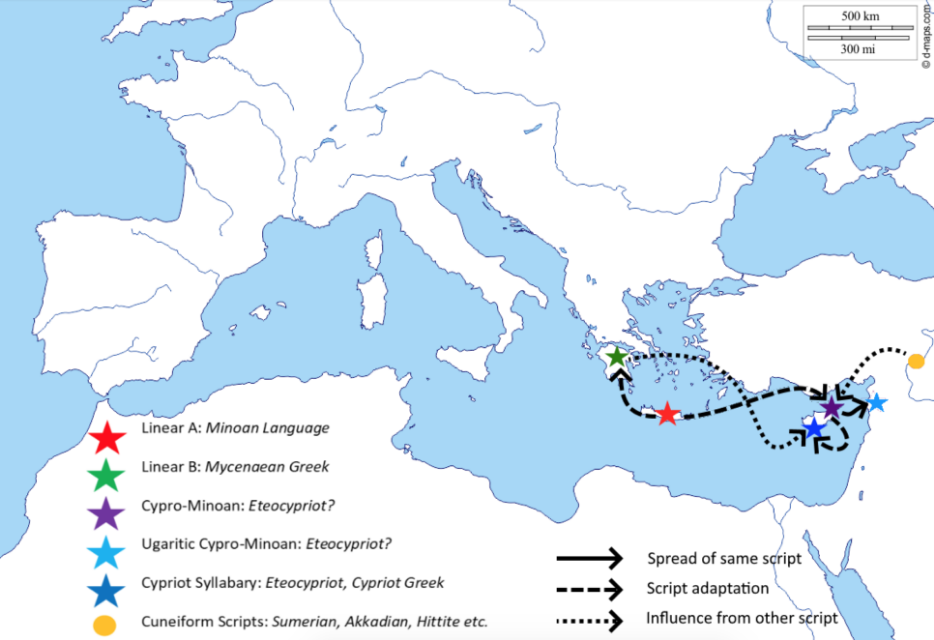Cypro-Minoan syllabary
- Haifa Tin Ingots
The nature of the Cypro-Minoan attestations in Ugarit is not fully understood. They could be the result of trade relations between Cyprus and Ugarit, or perhaps there was a Cypriot community living in Ugarit.
Outside Cyprus, it is certain that Cypro-Minoan was in active use in the city of Ugarit, on the Syrian coast. This is not too surprising, given Cyprus’ relative proximity to Ugarit (ca. 160 km). The nature of the Cypro-Minoan attestations in Ugarit is not fully understood. They could be the result of trade relations between Cyprus and Ugarit, or perhaps there was a Cypriot community living in Ugarit.
The Cypro-Minoan script seems to be related to various other scripts that are attested in the Eastern Mediterranean during the Late Bronze Age. These include Linear A and Linear B, which are known from Bronze Age Crete and Greece respectively. Linear B was used to write Mycenaean Greek, the oldest attested phase of the Greek language. Linear A on the other hand, is undeciphered. It represents the native language(s) of Crete, which would later be replaced by Greek, as was the case for Cypro-Minoan in Cyprus. It is not fully clear how Aegean writing (of which Linear A is the oldest version) would have travelled to Cyprus, as archaeological evidence for contact between Cyprus and Crete during this period is scarce. Moreover, though related, Cypro-Minoan is not a direct continuation of Linear A, and it may also have undergone influences from the cuneiform scripts used on the Asian mainland.
After the last attestations of the Cypro-Minoan script on Cyprus around the 9th century BCE, there is a gap in the written record of about 100 years. Then a new writing system appears: the Cypriot Syllabary. This script seems to be a reformed version of Cypro-Minoan, and it was also used to write Cypriot Greek.
](https://micrio.thingsthattalk.net/OcrgC/views/max/671x640.s.jpg)

](https://micrio.thingsthattalk.net/BEyVL/views/max/640x640.jpg)